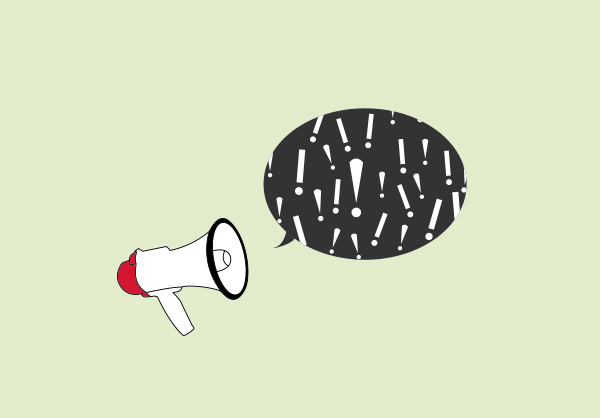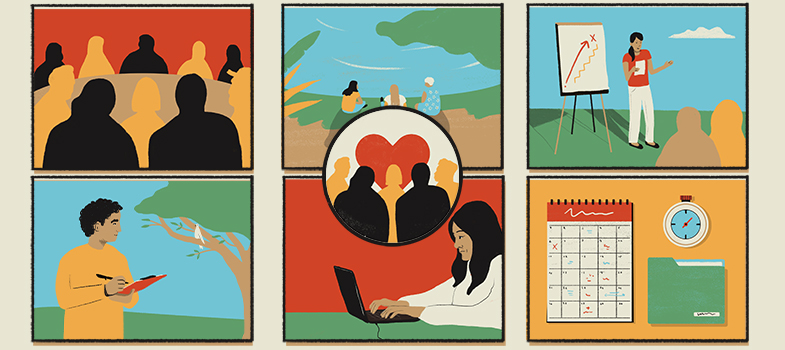Introduction to participatory techniques
6. Organise a workshop or a focus group

Step 1. Define the goals
- Many workshops or focus groups are a waste of time because there's no clear goal kept at the centre of the discussion. Therefore, the first step is to decide what topic you want to work on and what you are hoping to achieve.
Step 2. Decide who will attend
- This will depend strictly on your goals. If your goal is discussing a local practice that some people think could be a best practice for example, it is important to involve people who have different experiences and potentially different ideas and positions on the possible best practice. A workshop is a good time to share and discuss different points of view, so inviting people with different opinions about the topic can help to have a rich discussion.
- Once you have an idea about the people who need to be there, you should make a list of all participants. It is important to think carefully about who you want to attend to avoid wasting people’s time.
- Your list of participants should also have other important logistical information, such as the time of the meeting. Thinking about a good time for your workshop is important as people might have different schedules or commitments. Once you have set the date, the starting time and duration of the workshop or focus group this has to be announced ahead to allow people to organize themselves. Try to be as specific as possible with the people you invite but leave a few openings for last-minute additions and be aware that sometimes people drop-out unexpectedly.
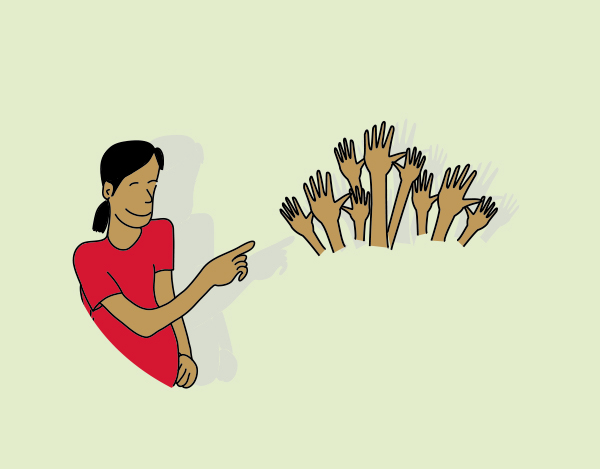
Step 3. Choose the location
- Choosing your location depends on how many people are participating. The venue must be easy to reach for everyone, big enough to allow participants to sit comfortably, and quiet enough so that people can concentrate. Make sure this venue is acceptable for every member of the community. You should also already think about your activities and ensure that your venue has the resources needed to run sessions (board for writing, space to run exercises, enough chairs, etc.)
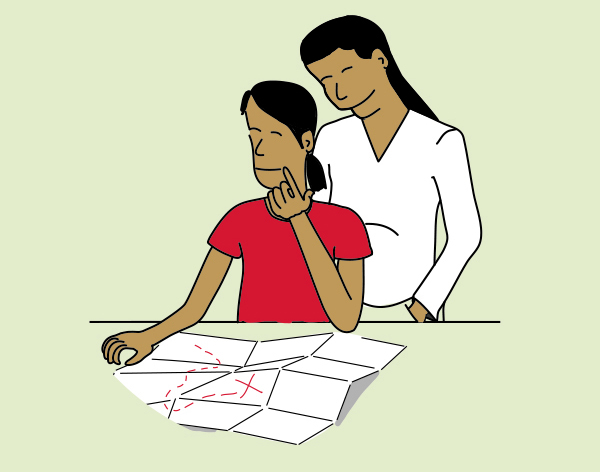
Step 4. Create an agenda
- Creating an agenda means to develop an outline of how you'll achieve the workshop's goals. It is very useful to create a list of main points to discuss, and then break down each larger point into details that you want to communicate to your audience.
- Taking pictures or video recordings of the discussions and activities is important to collect information from the workshop. It is also useful to make a list of which group discussions and activities you'll have and when you’ll have them to make sure you are on time. It is important to define how much time you will allow for each exercise. Make sure your activities are appropriate for the size of the group. Sometimes, it can also be helpful to share the agenda when you invite people to your workshop or a share it a few days beforehand.
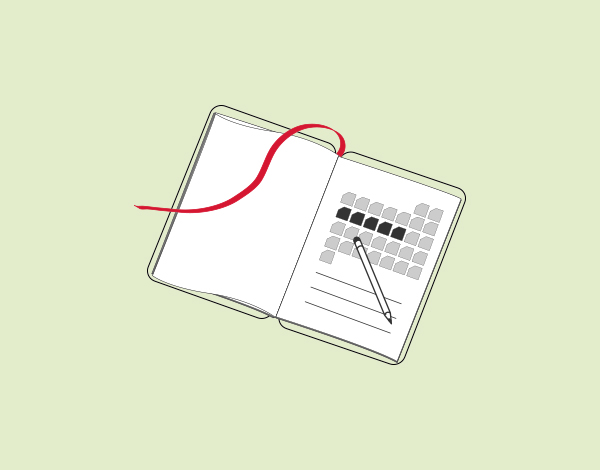
Step 5. Conduct the workshop or focus group
- The facilitator should start by introducing themselves and briefly outline the purpose of the discussion. Within a small group, participants should be asked to introduce themselves to the group. This should be brief and clear (name, place where the person lives, their occupation for example). After this, discuss and ask the participants to sign the consent form at this stage. A good moderator is one who facilitates discussion among the respondents but who does not dominate or lead the group or gives their opinion.
- Focus groups are often recorded or video recorded to assist in the analysis of information and this should also be mentioned at the start of the group and clearly explained in the consent form. People should agree and be comfortable. The camera should be placed discreetly. There will be occasions where recording is not possible or people don't allow it, and then you may choose to employ a note-taker or write notes yourself. Materials such as display boards, images or music can be used to provoke discussion.
- It is good practice for you to remind the group of the basic 'rules' regarding confidentiality and anonymity of the topics or stories raised during the discussion. It is often helpful to remind participants that they should feel free to be able to debate, disagree and critique, and that there is no right or wrong way of thinking. Participants are also free to leave at any time.
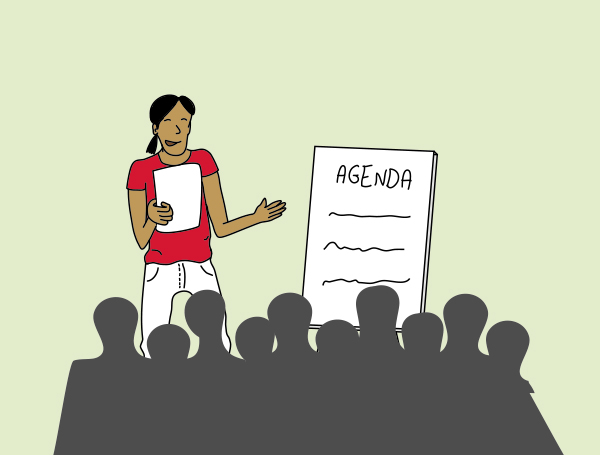
Step 6. Evaluation
- Evaluation of how your workshop or focus group went is very important. In order to evaluate the workshop you can create a questionnaire to give to all participants at the end of the event, and give them plenty of opportunity to share their opinions on how well it went. Evaluation can also be carried out as a debriefing at the end of the workshop or focus group. Evaluation is an on-going process so individual events should form part of the overall evaluation activities.
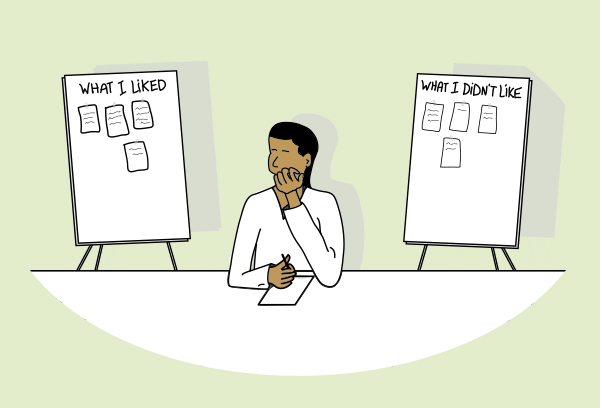
Step 7. Communication of insights emerging from the workshop
- It is also important to have a plan to communicate the information which emerged or the decisions that were reached during the workshop. People who participated need to know that their hard work resulted in a decision or action, and it is important to keep people who didn't participate updated as well. Also, you need to keep people informed about what is happening after the workshop has ended. You will need also to be incredibly careful about managing participants' expectations. Being transparent does not mean making plans that won't happen and it’s very important not to give promises that can’t be kept!
